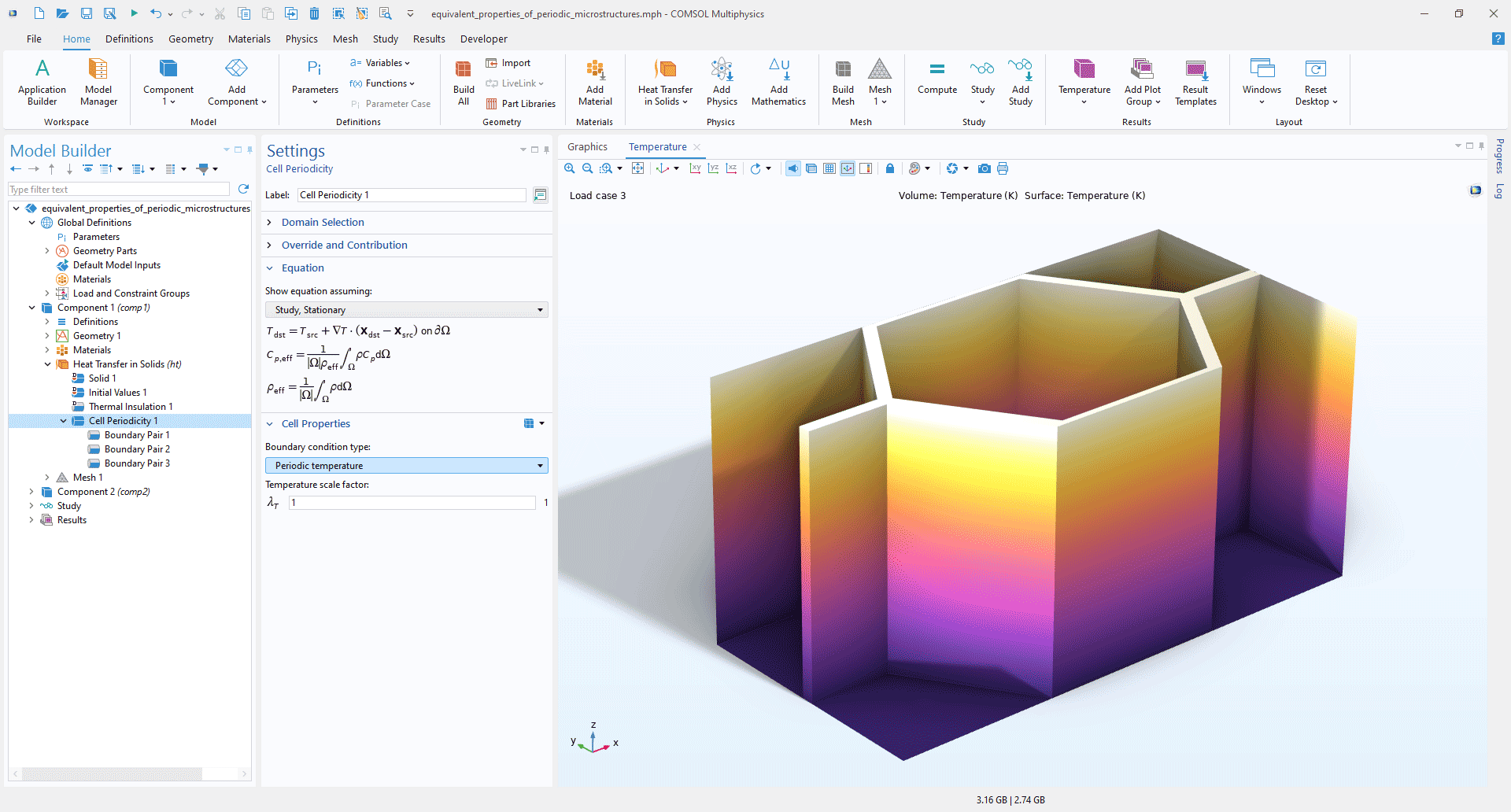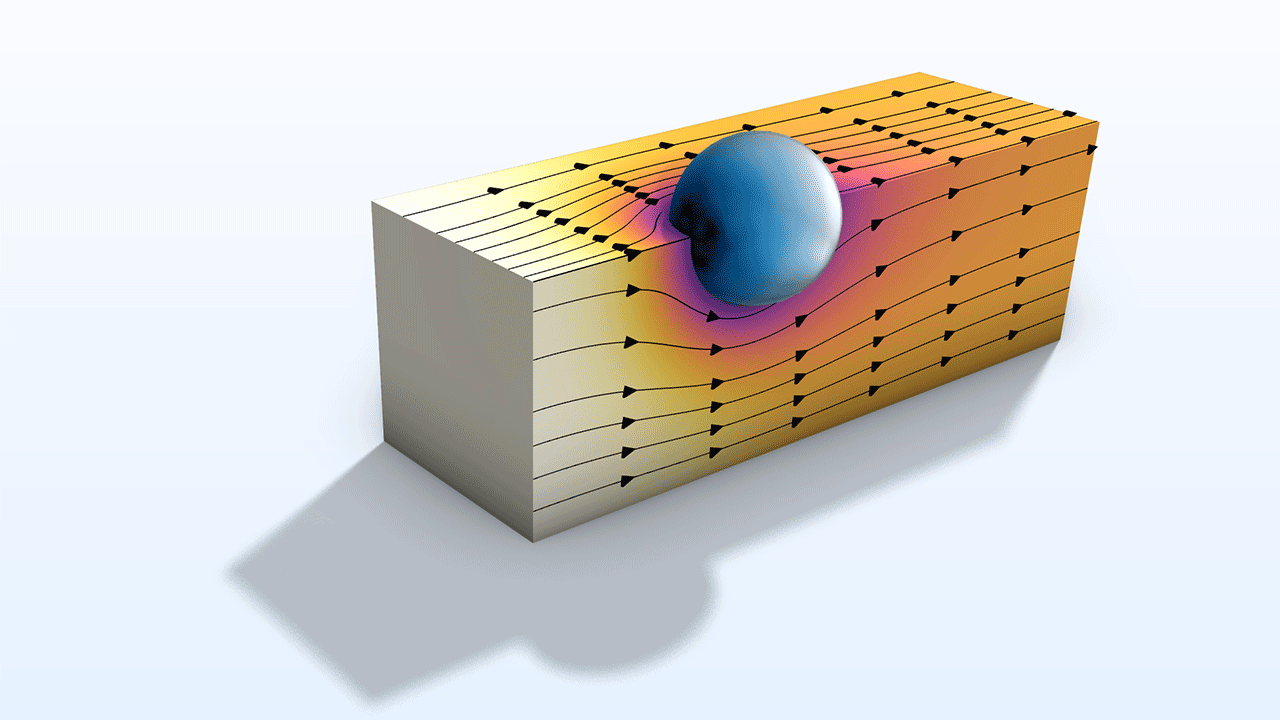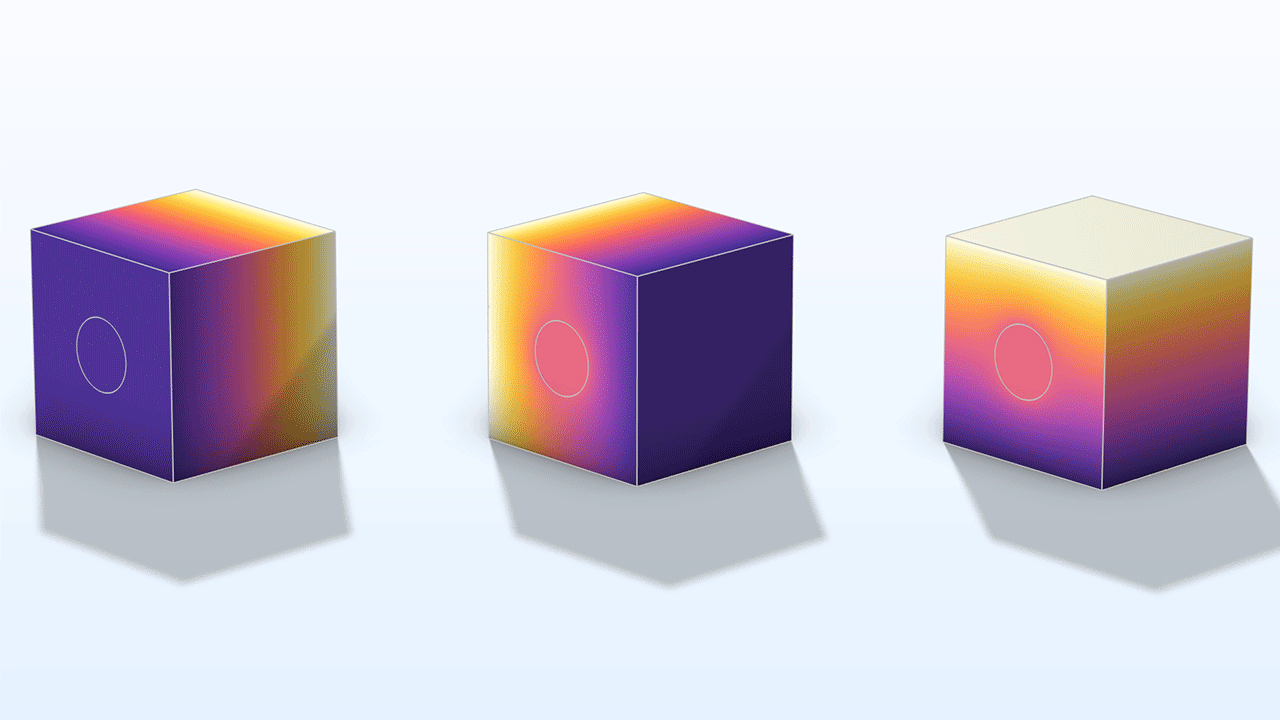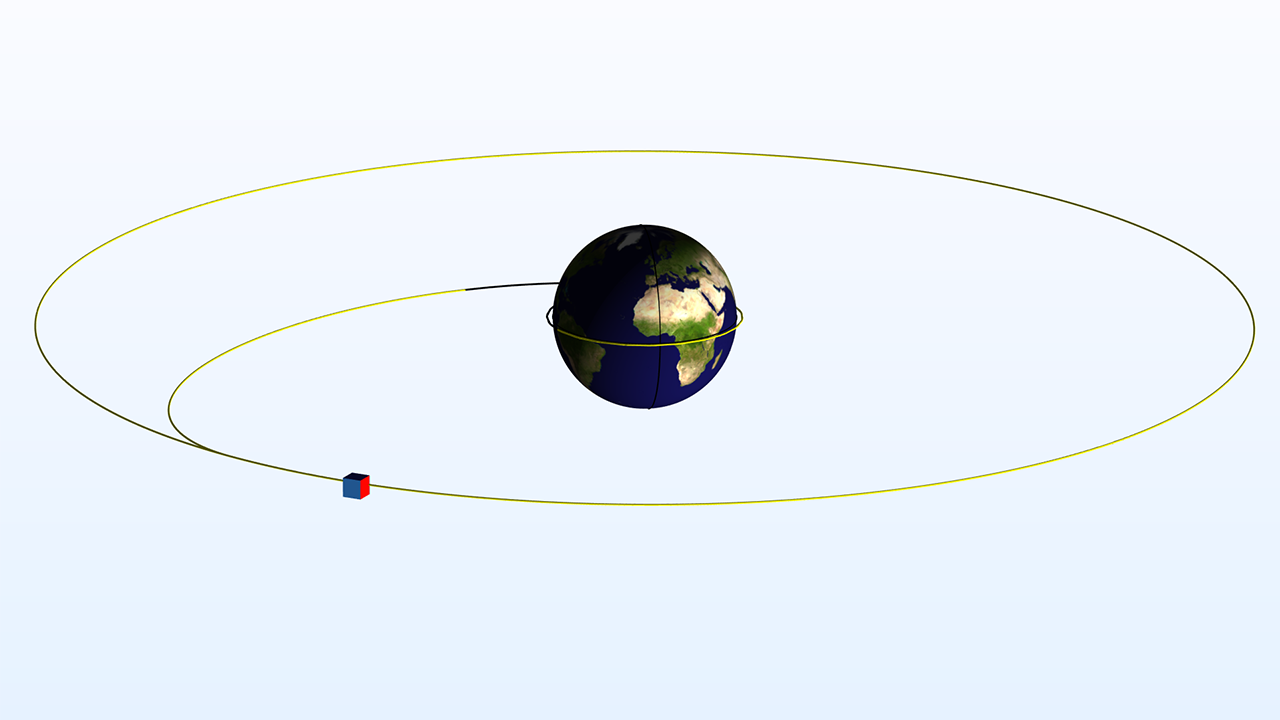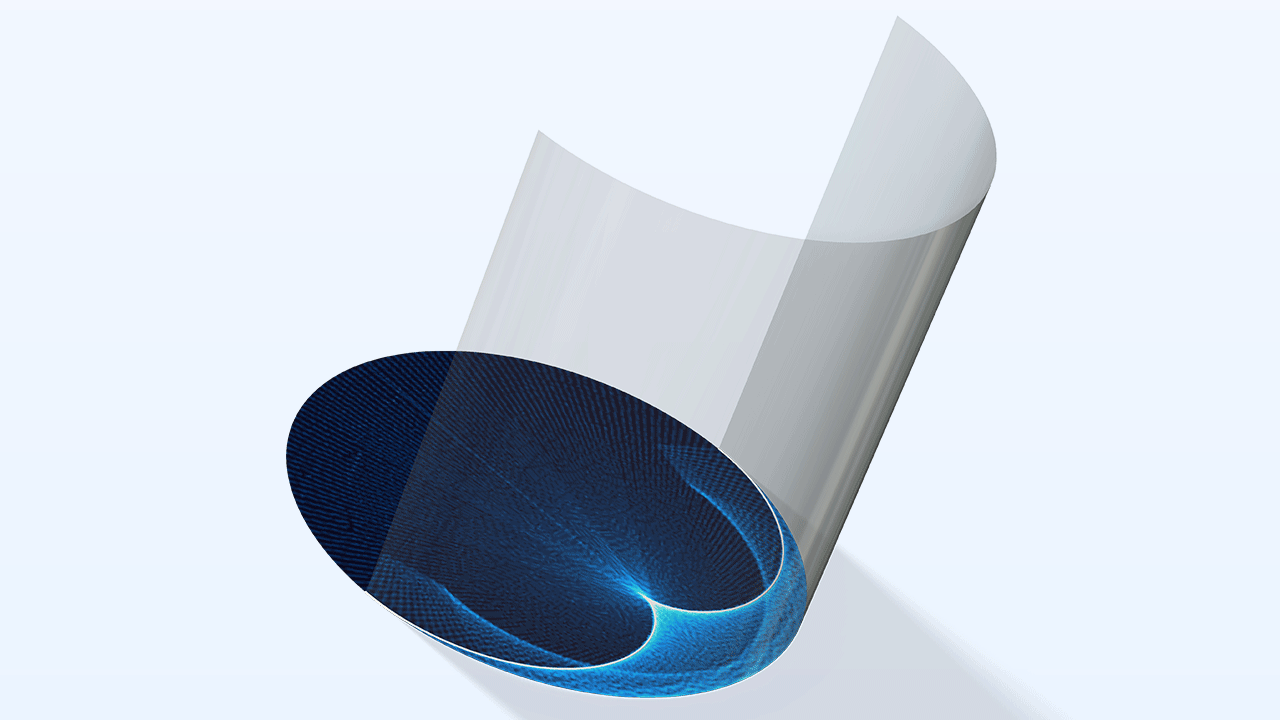Aggiornamenti Heat Transfer Module
Trasporto dell'umidità nei mezzi porosi
La formulazione di non equilibrio per il trasporto di umidità nei mezzi porosi può ora essere utilizzata per risolvere sia l'umidità relativa che la saturazione di acqua liquida, estendendo l'applicabilità della modellazione oltre le ipotesi di equilibrio. Questa nuova funzionalità è disponibile nella funzione Hygroscopic Porous Medium.
Nel Model Wizard sono disponibili due nuove interfacce per il trasporto dell'umidità. La prima interfaccia, Nonequilibrium Moisture Transport in Porous Media, calcola l'umidità relativa e la saturazione dell'acqua liquida nei mezzi porosi senza assumere l'equilibrio vapore-liquido. La seconda interfaccia, Moisture Transport in Free and Porous Media, è parametrizzata per semplificare la configurazione di modelli che coinvolgono più mezzi coesistenti. La nuova funzione Porous Interface offre inoltre una modellazione flessibile tra vari mezzi, come l'evaporazione alle interfacce. Il nuovo tutorial Superheated Steam Drying mostra l'interfaccia Moisture Transport in Free and Porous Media e la funzione Porous Interface.
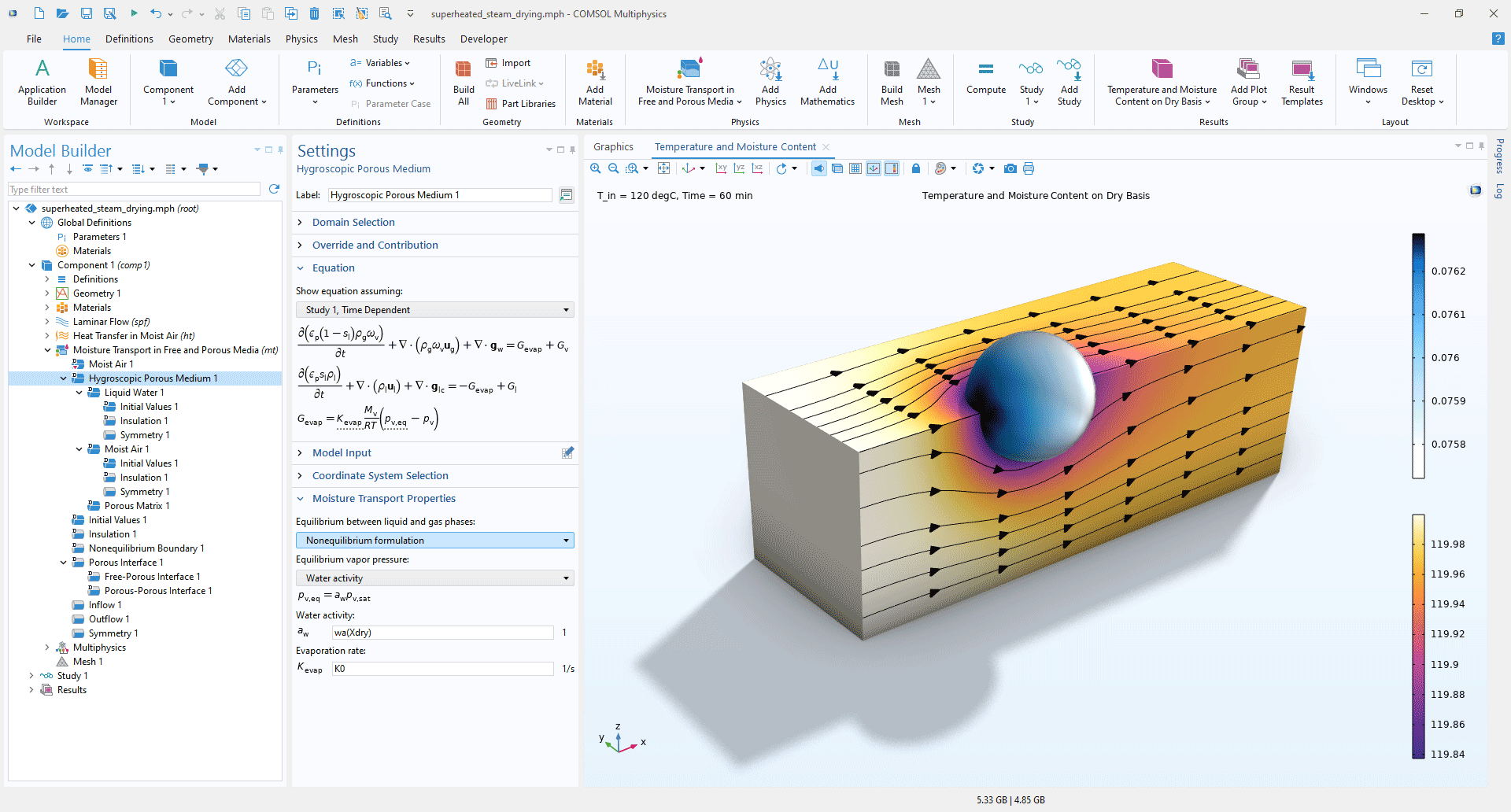
Orbita definita dall'utente per i carichi termici orbitali
Nell'interfaccia Orbital Thermal Loads, una nuova opzione permette agli utenti di definire liberamente la posizione di un veicolo spaziale, consentendo la modellazione e l'analisi del trasferimento di calore radiativo durante le orbite di trasferimento. Questa flessibilità garantisce una maggiore precisione nella simulazione dei carichi termici sui veicoli spaziali lungo i vari percorsi orbitali. Il nuovo tutorial Transfer Orbit mostra questa funzionalità e simula un trasferimento da un'orbita terrestre bassa a una geostazionaria.
Omogeneizzazione delle proprietà dei materiali per il trasferimento di calore
La nuova funzione Cell Periodicity dell'interfaccia Heat Transfer stima le proprietà effettive dei materiali eterogenei. Utilizzando i concetti di celle unitarie ripetute (RUC) o elementi di volume rappresentativi (RVE), la funzione calcola il tensore di conducibilità termica equivalente, la capacità termica a pressione costante e la densità per materiali periodici o altri materiali strutturati. Questa funzione fornisce un metodo efficiente per la modellazione e l'analisi delle proprietà di trasferimento del calore in materiali eterogenei. Può essere visualizzata nei tutorial Equivalent Properties of Periodic Microstructures e Homogenization of Fiber Composite Thermal Properties.
Miglioramenti delle prestazioni per la radiazione termica
Per i mezzi trasparenti, con l'algoritmo Hemicube è disponibile una nuova opzione di Use adaptive resolution coarsening. Questa opzione consente di ridurre la risoluzione unendo i pixel con livelli di irraggiamento simili, riducendo la memoria necessaria per risolvere i modelli.
Il metodo di radiazione Ray Shooting supporta ora la nuova funzione Specular Mirror. Questa funzione offre un'ottimizzazione e un miglioramento delle prestazioni nella modellazione di contorni con riflessione speculare pura. È inoltre disponibile un approccio forward ray-tracing per calcolare il contributo delle sorgenti di radiazione esterne, migliorando la precisione per le riflessioni multiple. Per le interfacce Radiation in Participating Media e Radiation in Absorbing-Scattering Media è stato introdotto un solutore alternativo con stabilizzazione dedicata, che offre efficienza nei casi con numerose direzioni mantenendo un utilizzo di memoria simile a quello del solutore predefinito.
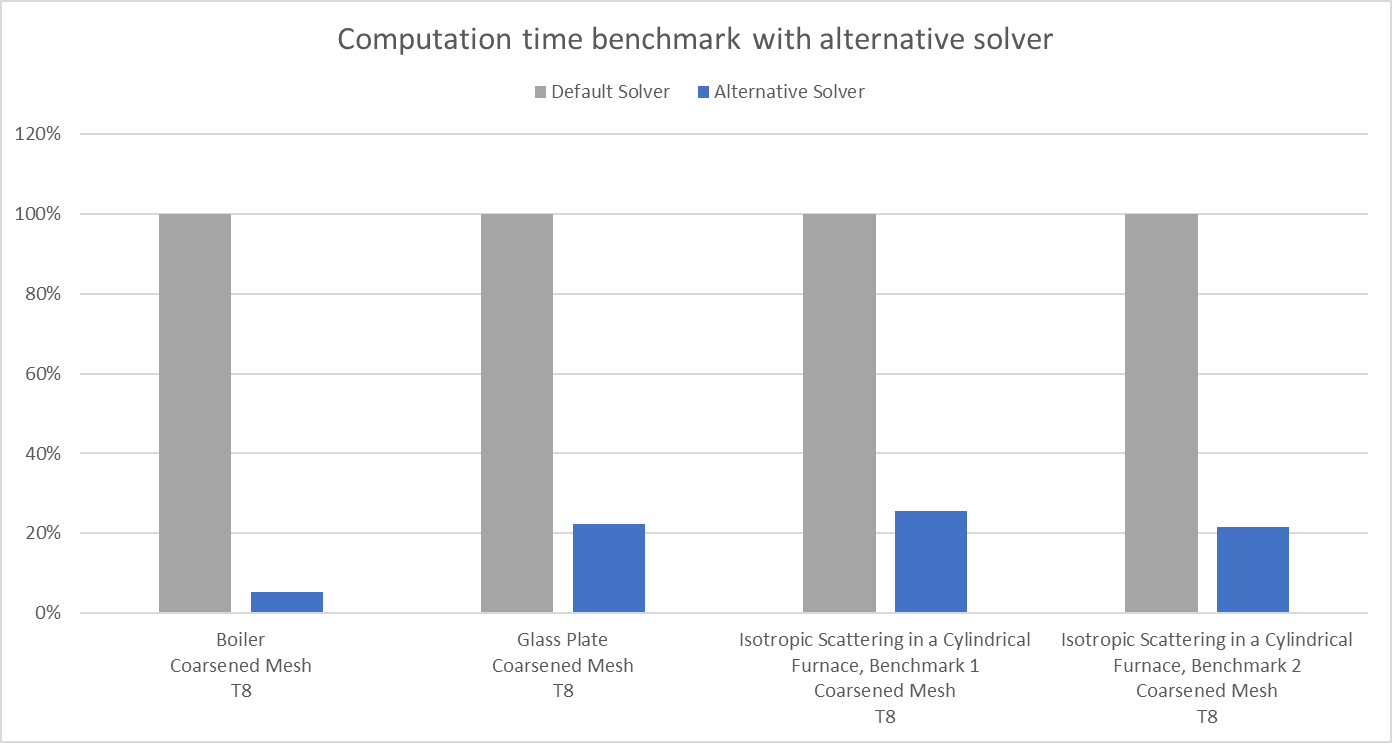
La funzione Symmetry è ora disponibile anche nelle interfacce Radiation in Participating Media e Radiation in Absorbing-Scattering Media con il metodo delle ordinate discrete (DOM). Con questo metodo, la funzione è limitata ai confini piatti allineati con gli assi del componente.
Questi miglioramenti sono visibili nei seguenti tutorial:
Nuovi tutorial
La versione 6.3 di COMSOL Multiphysics® introduce i seguenti nuovi tutorial nell'Heat Transfer Module.
Superheated Steam Drying of a Wood Particle
Modeling of the 3-Omega Method for Estimating the Thermal Conductivity of Nanostructured Materials
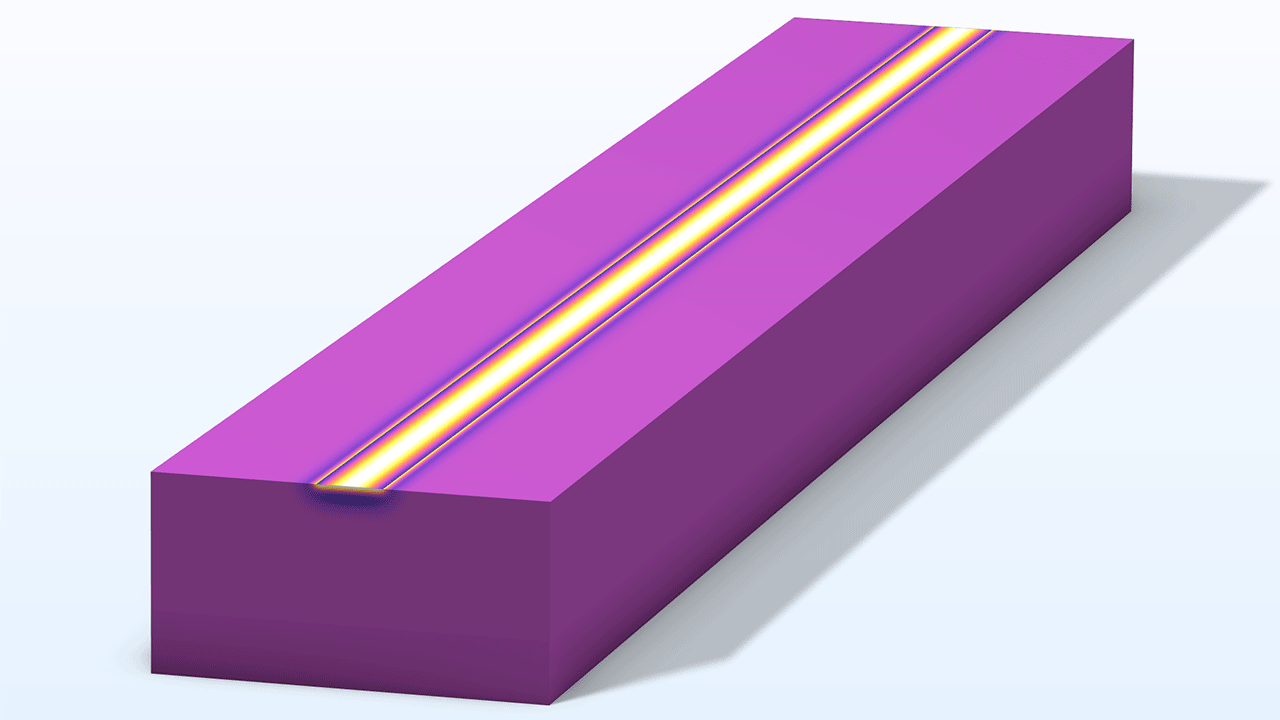
three_omega_method_for_estimating_thermal_conductivity
Download da Application Gallery

